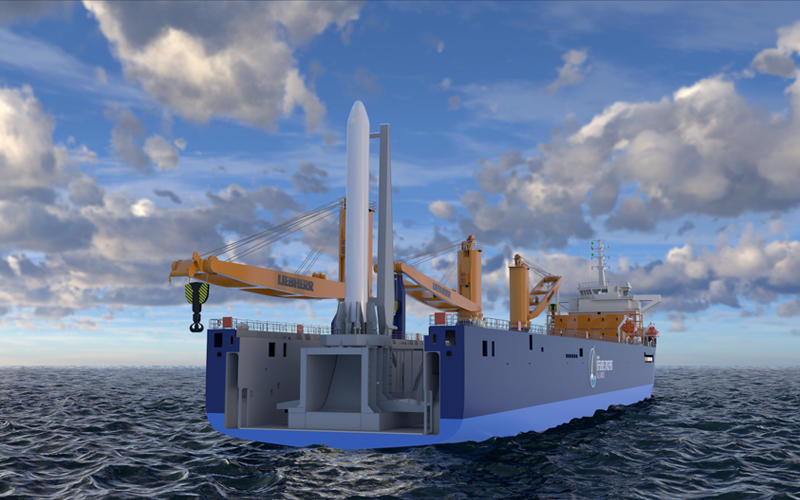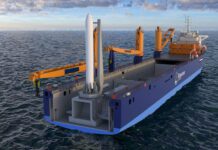
The German Offshore Spaceport Alliance (GOSA) has told European Spaceflight that it is targeting between April and May for its first launch campaign.
GOSA was formed in December 2020 as a joint effort between Tractebel DOC Offshore, MediaMobil, OHB, and Harren Shipping Services. The spaceport will utilize the 170-metre Combi Dock I ship and will be capable of hosting launchers with a mass of between 36 and 52 tonnes on a launchpad with a footprint of nine metres by nine metres.
The first launch campaign of this novel launch facility, which is being referred to as GOSA Demo#1, will include a series of four suborbital rocket launches that will take place over two days, with two rockets being launched per day.
Four different companies will supply rockets for the GOSA Demo#1 launch campaign. T-Minus Engineering from the Netherlands will launch its SDART rocket, Copenhagen Suborbitals from Denmark will launch its Recruits rocket, Space Team Aachen from Germany will launch its Aquila Maris rocket, and FAR from Germany will launch its Nova I rocket.
“The purpose of the GOSA Demo#1 Mission for GOSA is to test some elements (onshore and offshore infrastructure including telecoms, operational procedures) of the GOSA Offshore Spaceport concept, and to build up some experience with required coordination (e.g. with marine and air traffic) and licensing procedures, to be further used in the frame of the GOSA Offshore Spaceport orbital launch missions,” GOSA project manager at OHB Dr. Alain Pajonk told European Spaceflight. “At the same time, the four selected suborbital operators will use the opportunity to test their rocket, ground system, and concept of operation in the offshore context and/or perform some payload experiments.”
In addition to the launch campaign, some of the teams will also look to recovery rocket stages. Pajonk did, however, not specify which rockets would feature recoverable stages.
GOSA has already completed the mission’s preliminary design review and is now pushing ahead with the detailed design phase together with the selected operators. This phase of the mission’s design includes detailed safety assessments and the application for the required marine licence from UK authorities, as the mission design includes rocket stages falling into UK waters.



